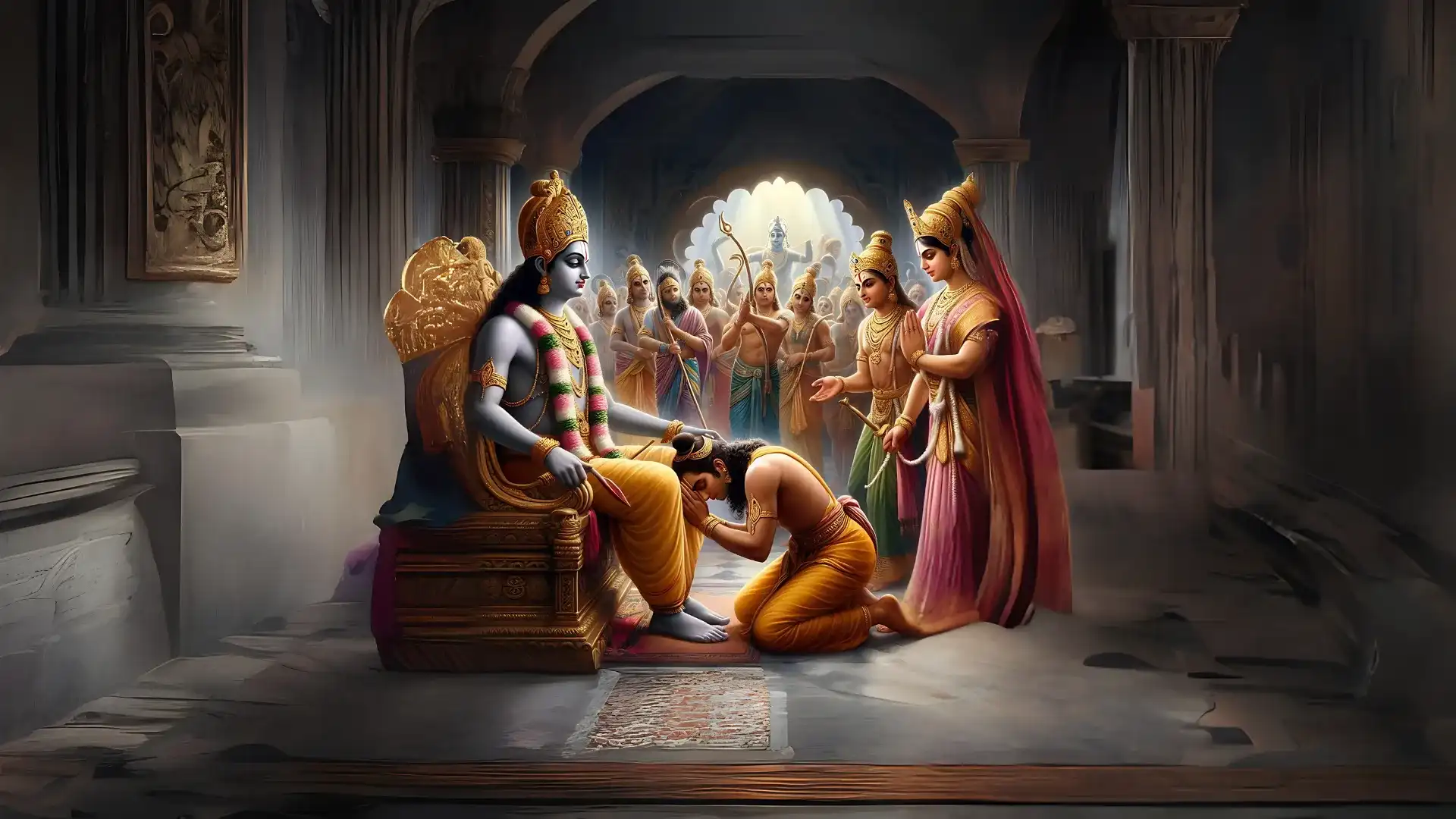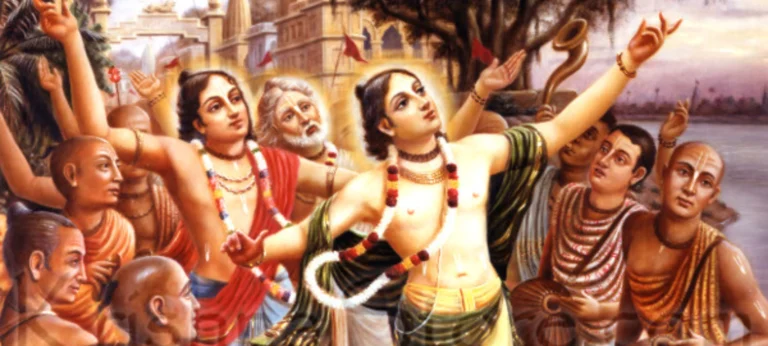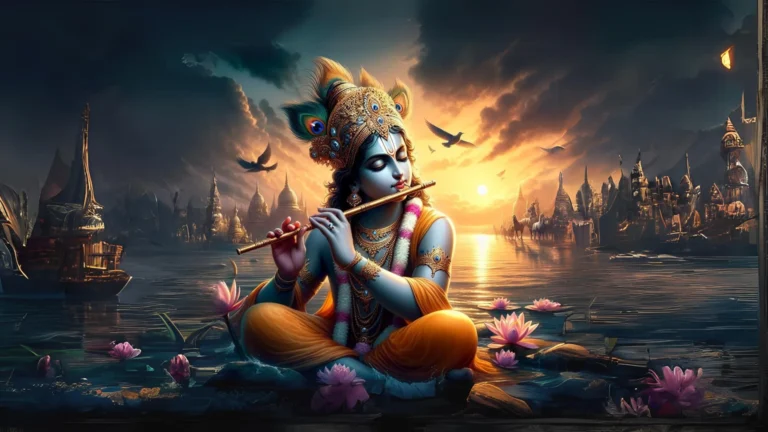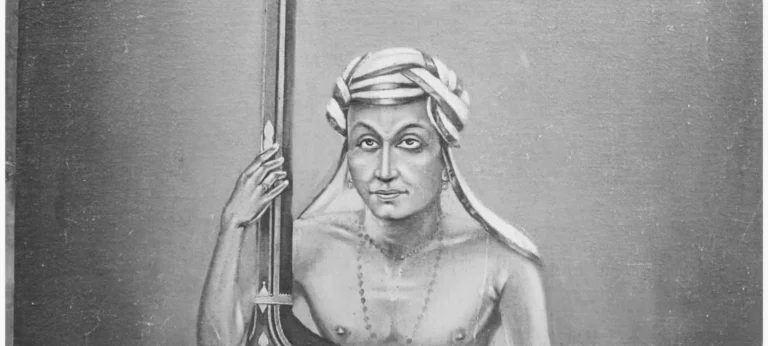Please Like the Blog and Share it for Maximum Reach
Table of Contents
Vaishnavas and their Sampradaya
Vaishnavas are devotees of Lord Vishnu. They exclusively worship Lord Vishnu, His incarnations and anything that concerns Him. There are 4 main Sampradayas or sects in Vaishnavas.
1) Sri Sampradaya-

Lakshmi Devi is the Adi Guru of Sri Sampradaya. The Sri Sampradya has 2 main divisions.
i) Ramunuja Sampradaya (also known as Sri Vaishnava Sampradaya)-
Sri Ramanujacharya, the incarnation of lord Lakshmana himself was the founder of this Sampradaya.. He chiefly propagated the philosophy of Vishishtadvaita, which addressed the soul (jeeva) as the eternal servant of Lord Narayana.
The Jeeva carries all the characteristics of the Supreme. However its magnitude is miniscule in comparison to the Supreme. The Sampradaya lays down rules for Vaidika worship of Lord Narayana.
ii) Ramanandi Sampradaya– This Sampradaya was initiated by Sri Ramanandacharya, the very incarnation of Lord Rama.
The teachings of this Sampradaya are similar to Ramanuja, however they have some differences..
Ramanandis accepted the two armed Lord Rama as their Lord while the followers of the Ramauja Sampradaya bowed before Lord Vishnu. Yet both of the Sampradayas consider Sri Rama, Sri Krishna and Lord Vishnu as the Supreme Personalities. The Ramanandi Sampradaya have shown a great inclination towards Lord Shiva as they state that neither Lord Rama nor Lord Shiva can be without each other. The Ramanuja Sampradaya, most places, do not show that much inclination towards Lord Shiva.
2) Rudra Sampradaya- Lord Rudra or Shiva is the Adi guru of the Rudra Sampradaya. Vishnu Swami is the founder of the Sampradaya. The Valabhacharya Sampradaya comes within it. Sri Vallabhacharya, a sage from the state of Andhra Pradesh was singularly responsible in spreading this sect in Gujrat, Uttar Pradesh and other northern States. many consider Sri Vallabhacharya as the incarnation of Agni Deva.
3) Hansa Sampradaya- Bhagavan Hansa is the founder of this Sampradaya. Sri Nimbarkacharya Sampradaya is a part of this Sampradaya.
4) Shesha Sampradaya- Sankarshana is the Adi guru of the Sampradaya. Madhva Sampradaya is a major branch of the Shesha Sampradaya. The Brahma Madhwa Gaudiya Sampradaya is a major branch of the Madhva Sampradaya. The Gaudiya Sampradaya are known to Integrate all the high points of the other Vaishnava Sampradayas and called as non-tattvavadins.
The Madhva Sampradaya in the Udupi regio, on the other hand, are Tattva Vadins, where they are brutal about their views about the material world. On the other hand, the Gaudiya Sampradaya which has its major branching after the arrival of the Pancha Tattva deities of Advaita Acharya, Lord Nityananda Prabhu, Lord Sriman Chaitanya Mahaprabhu, Gadadhara Pandit and Srivas Thakur, focus on the supra mundane aspects of eternal life beyond the material world.
Besides, there are other divisons of the Original Madhva Sampradaya, which have very litte in common with the Gaudiya Sampradaya namely the Radhavallabha Sampradaya of Hitaharivansha and Swami Haridasji’s Sampradaya which is another Sampradaya.
Test your Alignment with the Spiritual Subject Matter (only 7-8 Questions)
The scores generated in this Quiz are relative. There are no right or wrong answers. A percentage towards 100 indicates that you are more aligned to the overall subject matter.
The Deities of Vaishnava Sampradaya
Bhagavan Vishnu has assumed many incarnations. In this regard, there are many Sampradayas who accept a particular incarnation as the Supreme Entity. Even amongst Vaishnavas, there are different faith systems.
Let us explore each of them in some detail.
Bhagavan Narayana
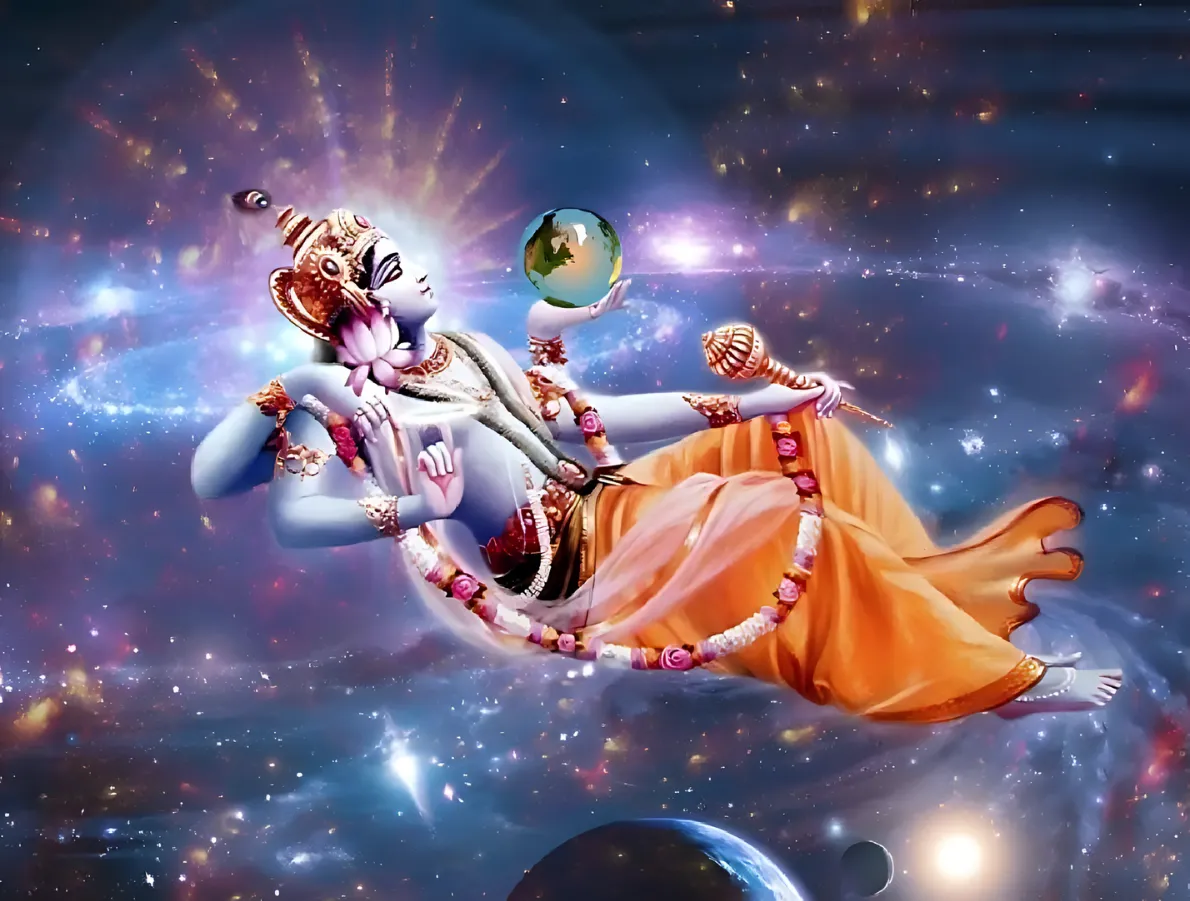
According to Ramanuja Sampradaya, Narayana is the Supreme Being. Lord Narayana eternally resides in Vaikuntha. He is the creator of Brahma, Vishnu and Shiva and the lord of Vaikuntha.
He has 4 arms, wears a yellow garment, and carries a club, lotus, disk and conch. His energy potency and consort, Lakshmi Devi, sits bedside his feet.
A Kaustubha gem is studded on his neck, a tuft of hair rests on his chest representing Lakshmi. He is the Supreme Being and the granter of liberation. The creator of the countless universes lays blissfully on a bed of serpents on the oceanic waters.
In the Garbhodakasayi form he is 8-handed and Lord of Bhuma Devi(Earth). Thus, in every universe, it is He who assumes the form of Vishnu and takes charge of sustenance. He is the lord of Ramaa (रमा) or the Goddess of Wealth and Prosperity. He is the eternal inhabitant pf the supramundane Vaikuntha domain.
In Shveta Dvipa, He is the supreme 4-handed Narayana wearing white garments with his moon-like soothing complexion. Lord Brahma appears from the lotus stalk shooting from His navel as he lays on Ksheer Sagar. That very Lord Narayana assumes the forms of Brahma, Vishnu and Shiva for creation, maintenance and devastation. He is the supreme deity of Surya.
Lord Vishnu for the protection of his devotees (Vaishnavas) and eradication of demons assumes different incarnations in every Yuga. The whole of creation lies in the limbs of the Gigantic Virat form of that Supreme Narayana. Lord Vishnu is deemed to have 10 primary incarnations. In fact the number exceeds 24.
However the part and qualitative incarnations (Anshavatar and Kalavatar) of Narayana are infinite.
Sri Rama
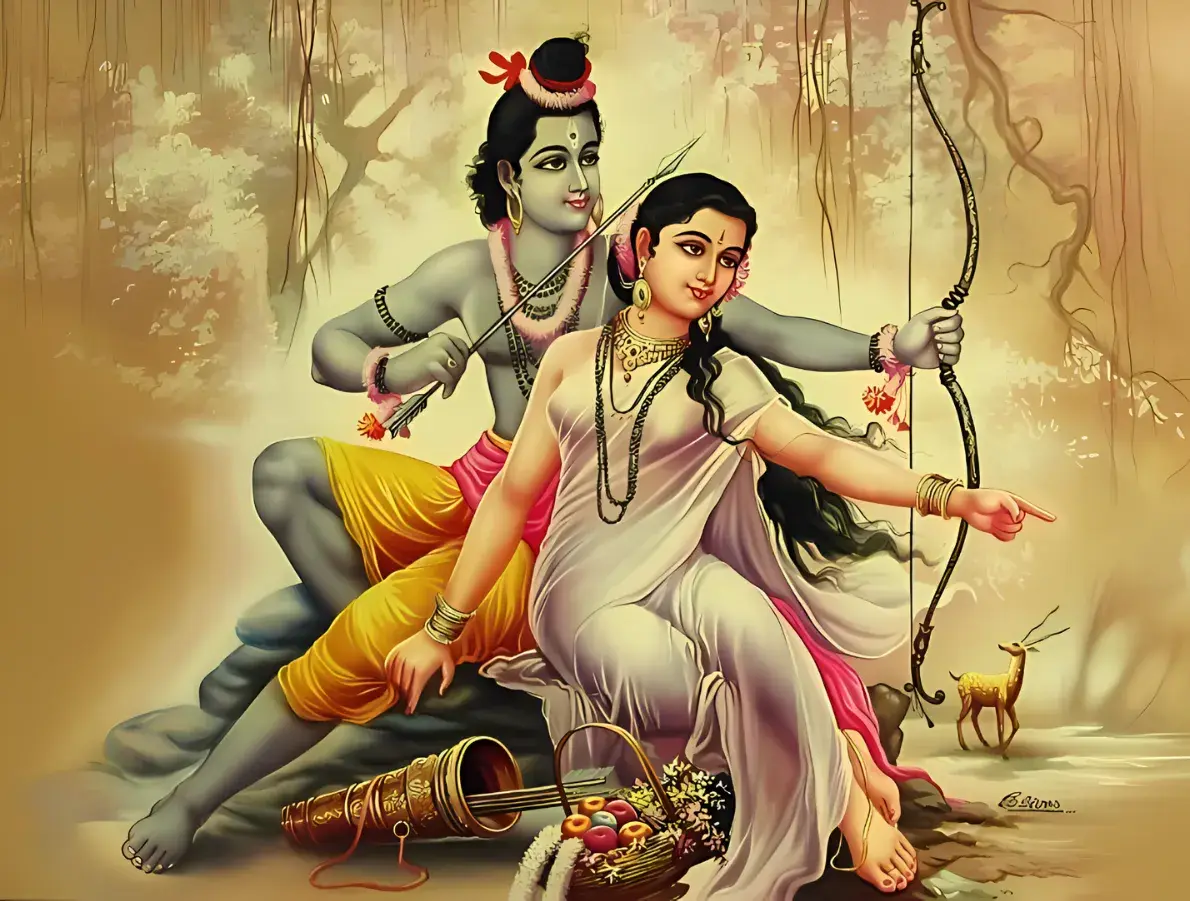
According to Rama devotees or Vaishnavas, Saket is the supreme abode. Sri Rama who sports in Saket is the Lord of the entire cosmic manifestation. Lord Rama’s energy potency and consort is Sita Devi.
Brahma, Vishnu and Shiva are his own expansions. However, Lord Vishnu incarnates frequently but the Supreme Being Shri Rama descends on the earth, only once in a Kalpa, in Treta Yuga.
Sri Krishna
According to Krishna devotees or Vaishnavas, Golok is the final beatitude. Sri Krishna is the master of all the abodes, he is the son of Nanda. His eternal consort and energy potency is Srimati Radharani. By his own sweet will, he descends to earth once in a Kalpa in the Dvapara yuga.
The Vraja leela is the cream of His pastimes. Sri Krishna’s exploits in Vraja are his main pastimes. The Dwaraka, Mathura and Kurukshetra pastimes are secondary.
Brahma, Vishnu and Shiva have emerged from the divine limbs of Sri Krishna. It is Lord Vishnu who assumes incarnations for the killing of asuras. Lord Krishna however is unconcerned as he is eternally situated in his abode, Goloka..
Similarities in Vaishnavas
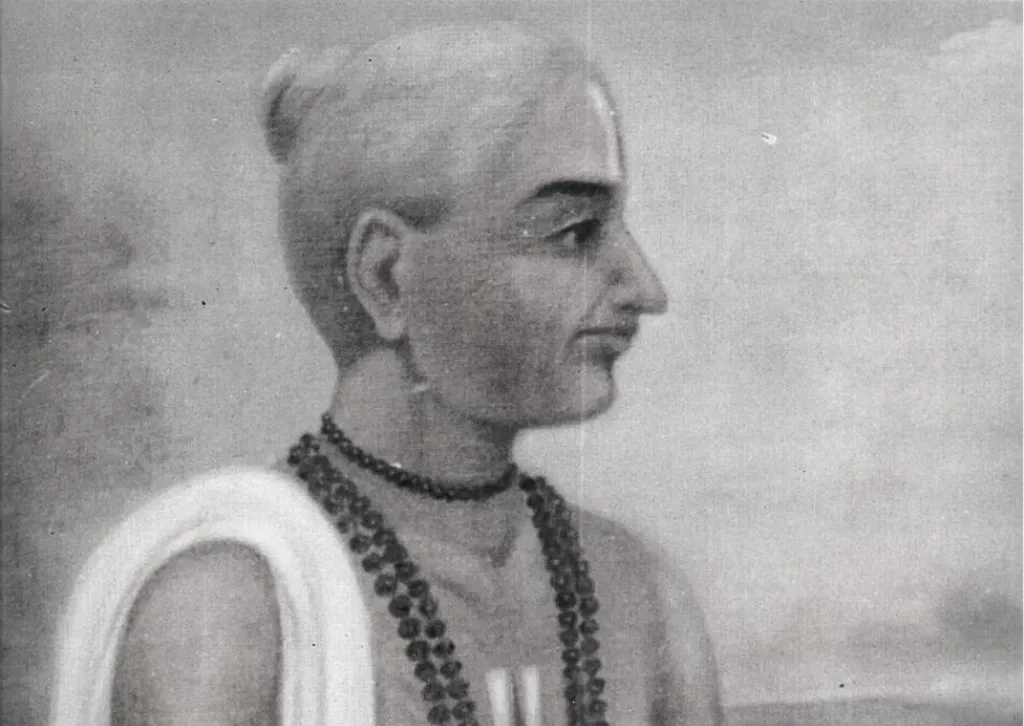
As we have seen above, the Vaishnava differ in their doctrines with regards to Saket, Vaikuntha and Goloka. However they agree at many places-
1) All identify themselves as Vaishnavas
2) All worship the Saligrama (The sacred stone manifestation of Lord Vishnu found in the Gandaki River)
3) All adorn Tulsi beads and offer incensed articles to their adorable Bhagavan.
4) Everybody agrees that Bhagavan has a Kausthubha gem on his neck and a tuft of hair on His chest.
Dashavatar
There are 10 primary avatars of Lord Vishnu, simply known as Dashavatar-
1) Matsya (मत्स्य)
2) Kurma (कूर्म)
3) Varah (वाराह)
4) Narasimha (नृसिंह)
5) Vamana (वामन)
6) Parashurama (परशुराम)
7) Sri Rama (श्रीराम)
8) Sri Krishna (श्रीकृष्ण)
9) Buddha (बुद्ध)
10) Kalki (कल्कि)
24 avatars of Bhagavan Vishnu
From the perspective of 24 incarnations, 14 more names are included in the list of Dashavatars. They are-
1) The Sanat Kumar brothers and Narada (सनकादि कुमार और नारद), grouped as one since both are the sons of Lord Brahma.
2) Hansa (हंस)
3) Nara-Narayana (नर नारायण)
4) Yagya (यज्ञ)
5) Hari (हरि- The protector of Gajendra)
6) Hayasheersha (हयशीर्ष)
7) Dhanvantari (धन्वन्तरि)
8) Mohini (मोहिनी)
9) Descension for Dhruva
10) Prithu (पृथु)
11) Rishabha (ऋषभ)
12) Dattatreya (दत्त)
13) Kapila (कपिल)
14) Vyasa (व्यास)
In them, the Sanat kumar brothers and Narad Muni are the sons of Brahma, so they are grouped as 1 Avatar. With this idea, we get the number 24.
Otherwise there are 25 incarnations.
Many people falsely believe that the Dashavatara follow a chronology as Matsya, Kurma, Varaha and so on. However, Matsya Avatar was not the first incarnation. Matsya Avatar took place at the end of Chakshushya Kalpa. Similarly, Kurma Avatar happened long before Varaha and Narasimha during the churning of the ocean. Thus, there is no specific chronology of their manifestation.
Please Like the Blog and Share it for Maximum Reach

